Posted by Horton Tatarian, research biochemist, on 28th Mar 2017
Roundup® in America's Favorite Foods
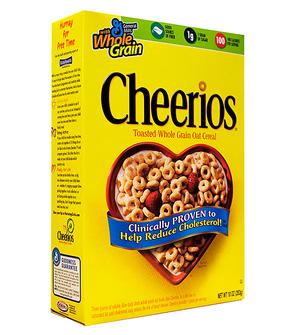
Cheerios may contain the highest level of glyphosate, a toxic ingredient of Roundup®
This article is about glyphosate, an ingredient of Monsanto's Roundup® and other brands of weed-killers in the food supply.
How Farmers Use Roundup®
Farmers apply Roundup® on GM (genetically modified) crops grown from seeds altered by Monsanto to tolerate glyphosate. The government classifies plants and other organisms having laboratory modified DNA as GMOs (genetically-modified organisms).
Plants that are not genetically modified to tolerate Roundup® are susceptible to glyphosate's plant enzyme disruption, which causes plant death soon after exposure to the herbicide.
Some farmers also use Roundup® for a second purpose, as a crop desiccant (drying agent) just before harvesting.
Most Breakfast Cereals Contain Glyphosate
In the following table, "ppb" is an abbreviation for "parts per billion." 1 ppb represents the dilution of one drop in 25 liters of water. Although 1 ppb is a very small amount, potent chemicals can have toxic effects at these levels.
The higher level of glyphosate found in samples of Cheerios is likely due to the use of Roundup® as a crop desiccant, a growing practice in conventional commercial agriculture.
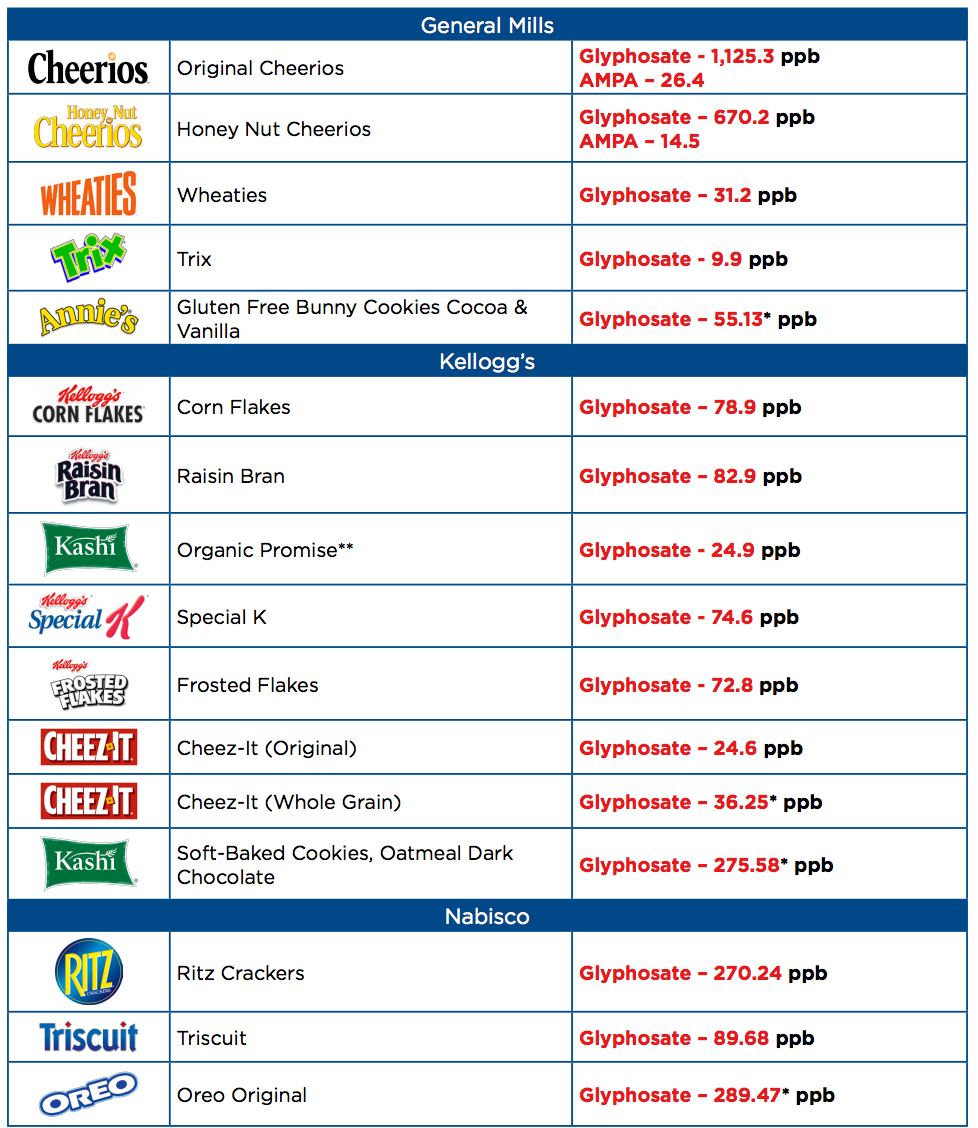
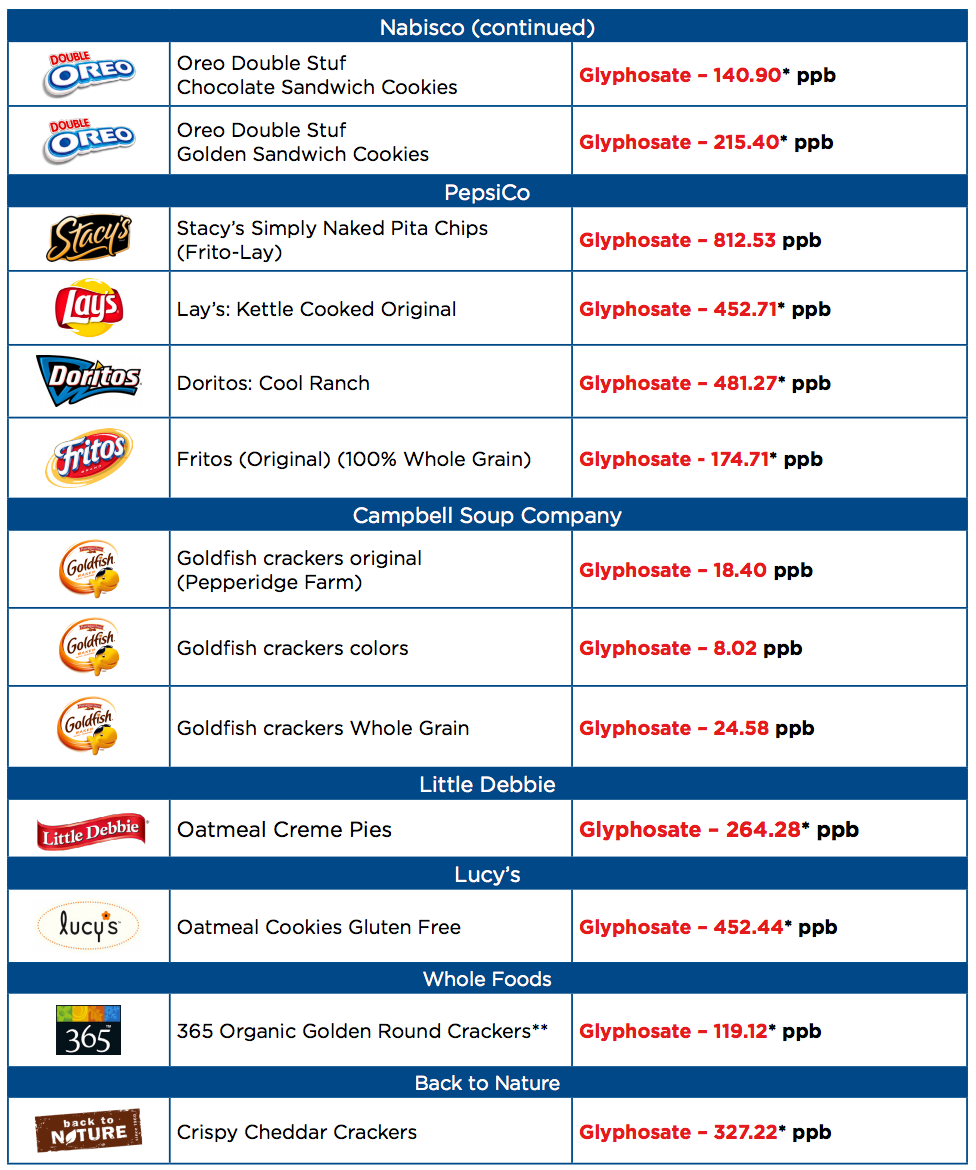
Also, see Laboratory Certificates of Analysis for items found to have undetectable levels of glyphosate.
Glyphosate Is Everywhere
Glyphosate is accumulating in plants, animals, drinking water, and food supplies.
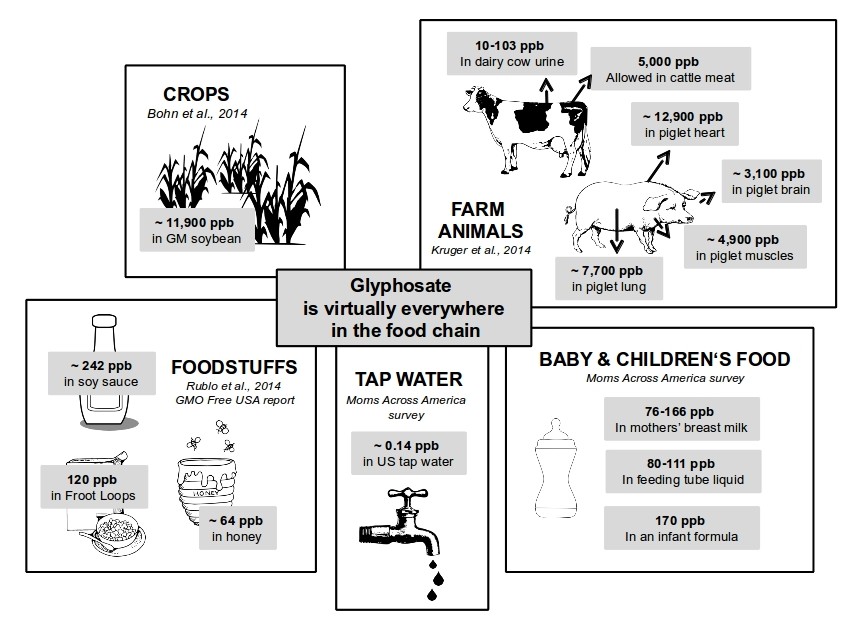
Glyphosate Is In People
The urine of US and European residents contains glyphosate, which is evidence of its presence in human tissues.
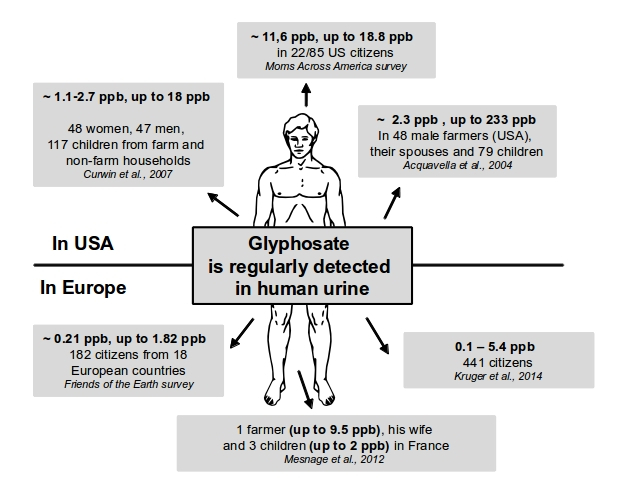
Monsanto's Safety Claim Is Outdated
Monsanto has long claimed that Roundup® is toxic only to plants. The following statement is from Roundup.com, downloaded on 28 March 2017:
Glyphosate-based products have a 40-year history of safe use. In fact, there have been over 800 health and safety studies on glyphosate — many of which came from independent researchers. That’s why people all over the world have chosen Roundup® Weed & Grass Killer products to control their weeds. Reference
However, in 2015, a World Health Organization's analysis of scientific studies led the WHO to classify glyphosate as a probable carcinogen. Carcinogens are cancer-causing agents dangerous to animals and people.
The organization’s cancer arm, the International Agency for Research on Cancer, said glyphosate, the active ingredient in the Monsanto herbicide Roundup, was “classified as probably carcinogenic to humans.” It also said there was “limited evidence” that glyphosate was carcinogenic in humans for non-Hodgkin lymphoma. Reference
Also, see the World Health Organization's Q&A on Glyphosate.
Toxic Levels Have Been Reached
Current science suggests that the intake of glyphosate at any level is unsafe. Recent studies indicate that glyphosate causes genetic damage, tumors, liver damage, kidney damage, and brain damage even at the low levels of concentration permitted by regulatory agencies.
Residue levels in food or water, as well as human exposures, are escalating. We have reviewed the toxic effects of GlyBH measured below regulatory limits by evaluating the published literature and regulatory reports. We reveal a coherent body of evidence indicating that GlyBH could be toxic below the regulatory lowest observed adverse effect level for chronic toxic effects. It includes teratogenic, tumorigenic and hepatorenal effects. Reference
Furthermore, some of the other ingredients of Roundup®, which increase the toxicity of glyphosate, are toxic in themselves.
Some effects were detected in the range of the recommended acceptable daily intake. Toxic effects of commercial formulations can also be explained by GlyBH adjuvants, which have their own toxicity, but also enhance glyphosate toxicity. These challenge the assumption of safety of GlyBH at the levels at which they contaminate food and the environment, albeit these levels may fall below regulatory thresholds. Reference
Years ago, Monsanto and regulatory agencies may not have known about the toxic effects of Roundup® on animals and people. However, today the toxicity of glyphosate and Roundup® is clear.
Regulatory estimates of tolerable daily intakes for glyphosate in the United States and European Union are based on outdated science. Reference
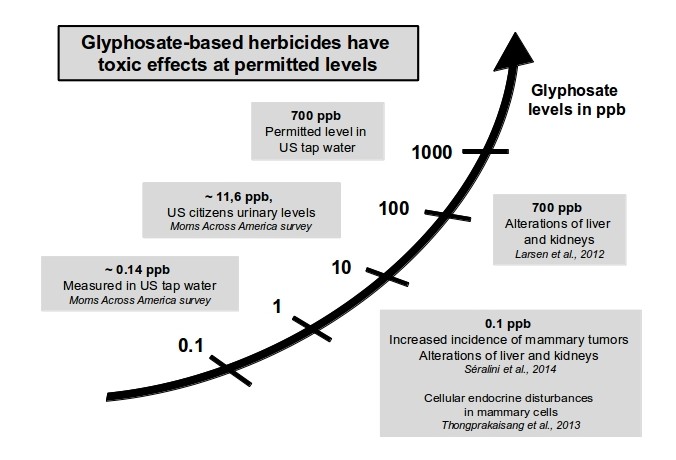
Recommendation
Avoid Contaminated Foods
Avoid foods contaminated with Roundup® and other toxic chemicals. When possible, switch from conventionally grown foods and food products to certified organic foods and food products. Also, see Glyphosate: Unsafe On Any Plate for further information.
Detoxify
See other articles on detoxifying the body.
About Horton Tatarian

I’m a biochemist who examines scientific findings on health and disease. My degree in biochemistry is from U.C. Berkeley. UCLA School of Medicine granted an M.D. degree in 1974. Since then, independent research prepared me to advise clients on natural ways of self-care.

